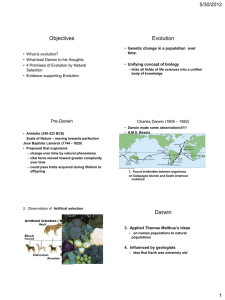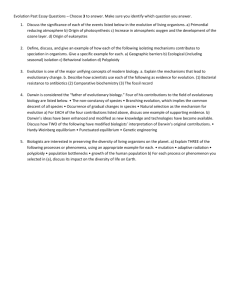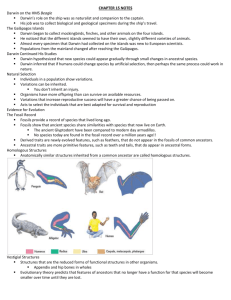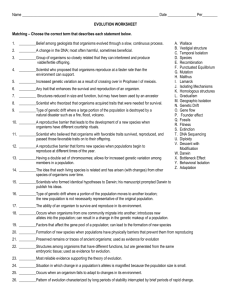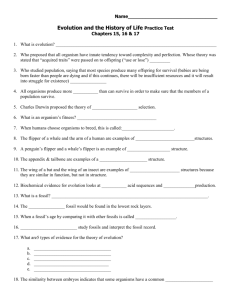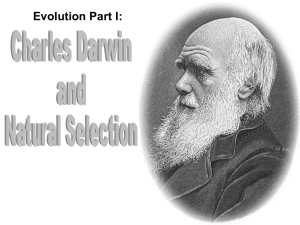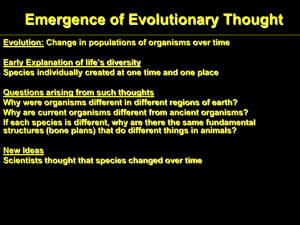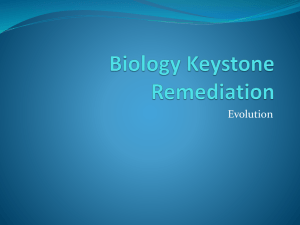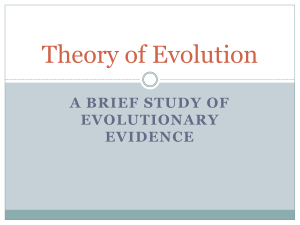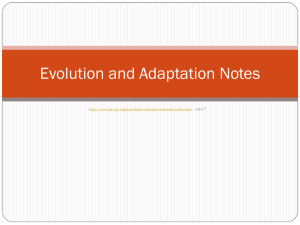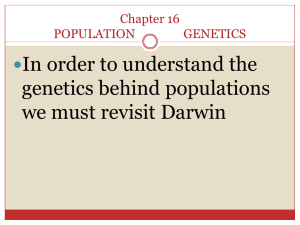Honors Biology Evolution Test SB5
advertisement
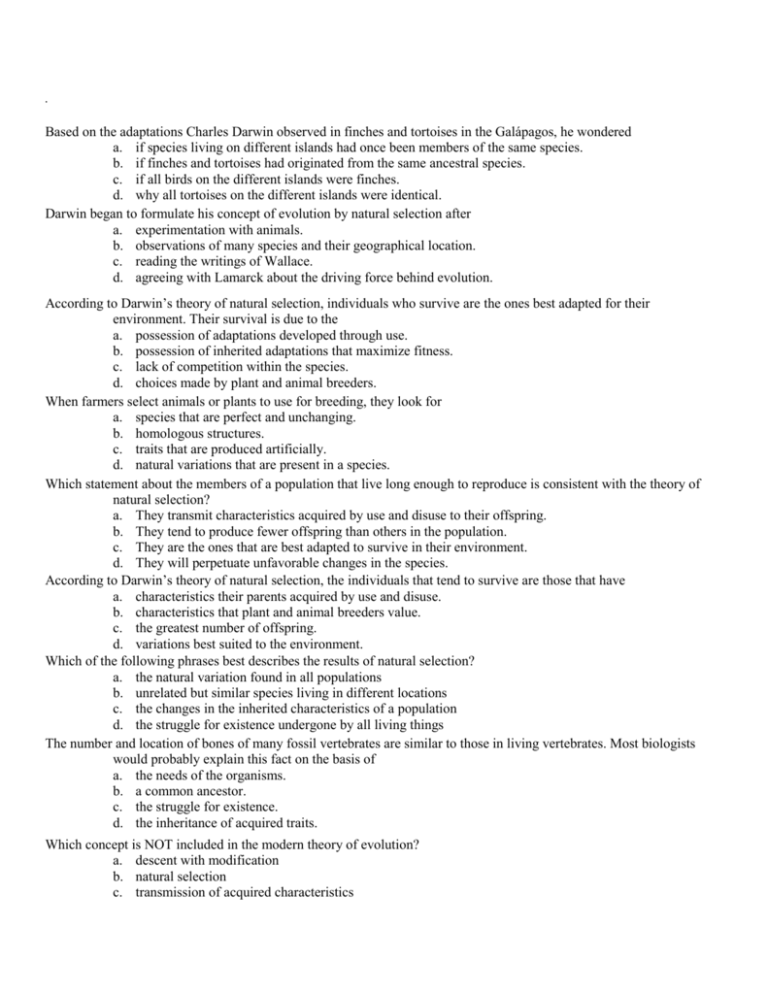
. Based on the adaptations Charles Darwin observed in finches and tortoises in the Galápagos, he wondered a. if species living on different islands had once been members of the same species. b. if finches and tortoises had originated from the same ancestral species. c. if all birds on the different islands were finches. d. why all tortoises on the different islands were identical. Darwin began to formulate his concept of evolution by natural selection after a. experimentation with animals. b. observations of many species and their geographical location. c. reading the writings of Wallace. d. agreeing with Lamarck about the driving force behind evolution. According to Darwin’s theory of natural selection, individuals who survive are the ones best adapted for their environment. Their survival is due to the a. possession of adaptations developed through use. b. possession of inherited adaptations that maximize fitness. c. lack of competition within the species. d. choices made by plant and animal breeders. When farmers select animals or plants to use for breeding, they look for a. species that are perfect and unchanging. b. homologous structures. c. traits that are produced artificially. d. natural variations that are present in a species. Which statement about the members of a population that live long enough to reproduce is consistent with the theory of natural selection? a. They transmit characteristics acquired by use and disuse to their offspring. b. They tend to produce fewer offspring than others in the population. c. They are the ones that are best adapted to survive in their environment. d. They will perpetuate unfavorable changes in the species. According to Darwin’s theory of natural selection, the individuals that tend to survive are those that have a. characteristics their parents acquired by use and disuse. b. characteristics that plant and animal breeders value. c. the greatest number of offspring. d. variations best suited to the environment. Which of the following phrases best describes the results of natural selection? a. the natural variation found in all populations b. unrelated but similar species living in different locations c. the changes in the inherited characteristics of a population d. the struggle for existence undergone by all living things The number and location of bones of many fossil vertebrates are similar to those in living vertebrates. Most biologists would probably explain this fact on the basis of a. the needs of the organisms. b. a common ancestor. c. the struggle for existence. d. the inheritance of acquired traits. Which concept is NOT included in the modern theory of evolution? a. descent with modification b. natural selection c. transmission of acquired characteristics d. competition among the members of a population The two main sources of genetic variation are a. genotypes and phenotypes. b. gene shuffling and mutations. c. single-gene traits and polygenic traits. d. directional selection and disruptive selection. Which of the following is NOT a way in which natural selection affects the distribution of phenotypes? a. directional selection b. stabilizing selection c. disruptive selection d. chance events When individuals at only one end of a bell curve of phenotype frequencies have high fitness, the result is a. directional selection. b. stabilizing selection. c. disruptive selection. d. genetic drift. The allele frequencies of a population are more likely to remain unchanged if a. the population size is reduced. b. frequent movement into and out of the population occurs. c. all mating is random. d. the mutation rate increases. The separation of populations by barriers such as rivers, mountains, or bodies of water is called a. temporal isolation. b. geographic isolation. c. behavioral isolation. d. genetic equilibrium. The geographic isolation of two populations of a species tends to increase differences between their gene pools because it a. prevents interbreeding between the populations. b. prevents interbreeding within each population. c. causes temporal isolation of the two populations. d. increases differences in courtship behavior. There are millions of species of organisms living at this time and new species are still being discovered. Based on Darwin’s theory of evolution, which of the following best describes how millions of species have developed? A. Organisms passed on acquired characteristics to evolve from lower life forms to higher life forms. B. Organisms were selectively bred to create different species. C. Completely different species crossed with one another to form the many different organisms. D. Different genetic variations in organisms were selected in different environments. Compare and contrast the two different forms of genetic drift. Explain the types of isolation and give an example of each type.


